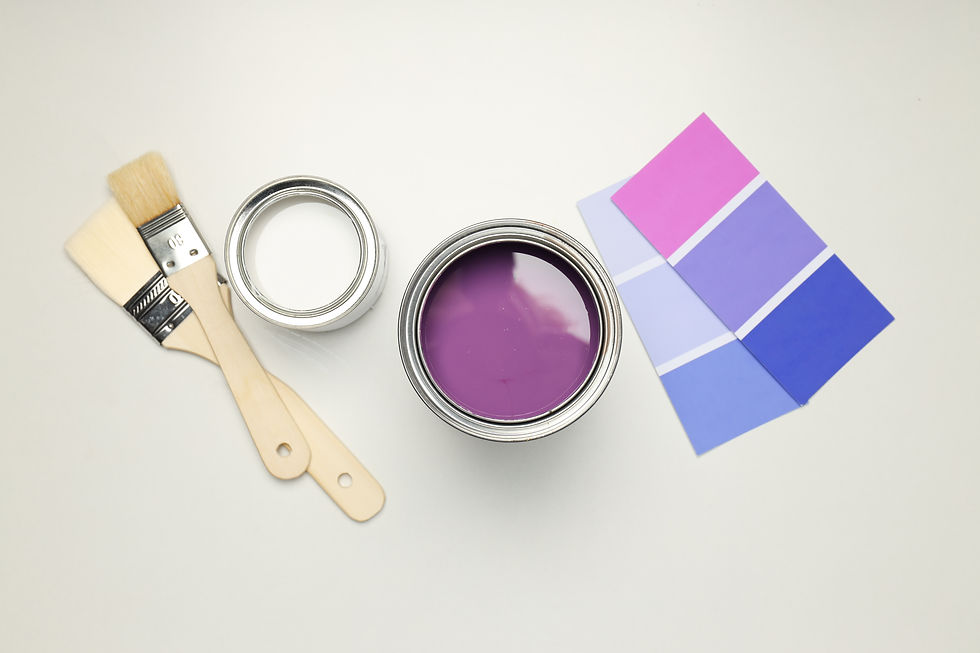How to Choose Tile and Avoid Costly Mistakes: 4 Professional Tips
- Ирина Колб

- Oct 7
- 4 min read
Tile is one of the most demanding materials in any renovation. It requires precision at every step — from choosing the right format to achieving a flawless installation. Even a small mistake can turn into a big expense: wasted material, missed deadlines, mismatched shades.
That’s why it’s important to understand what really matters before you buy. To help you save time, money, and nerves, here are four simple tips that will help you learn how to choose tile before the first box leaves the store.

Start with the Location, Not the Color
Before you look at colors and textures, think about where the tile will be installed. It sounds obvious, but this decision affects everything — durability, moisture resistance, and even safety.
Floor or wall.
Floor tile is thicker and stronger because it has to handle furniture weight and foot traffic. You can use it on walls if the design fits, but never use wall tile on floors — it’s too thin and will crack under pressure.
Wet or dry area.
If the tile will be used in a shower, choose material with low water absorption. The best option is porcelain tile — it’s dense, moisture-resistant, and doesn’t allow mold to grow underneath.For dry walls, ceramic tile works perfectly fine — it’s lighter and more affordable.
Slip resistance.
In wet areas, safety comes first.Look for a COF rating of 0.6 or higher — this means the surface provides enough grip even when it’s wet or soapy.
Foot traffic.
The kitchen floor experiences constant wear. Choose tiles with a PEI rating of 4–5 — they’re made to handle daily use and won’t lose their look after a year.

Check the Lot and Caliber Before Installation
Before you start tiling, make sure every box has the same Lot Number and Caliber. Even tiles from the same collection can vary slightly in shade or size if they were produced at different times. You might not notice it on the display, but once installed, the difference becomes clear.
Another common mistake is buying just enough tile by the square foot. During installation, some tiles will be cut, a few might crack, and you may need extras for corners or edges. By the time you go back, that batch might already be sold out.
Always buy 10–15% more than your calculated area. That small extra amount can save the project. Keep one box in storage — it will come in handy years later if you ever need to replace a damaged section.

Match the Tile Size to the Room Size
Tile format greatly affects how a room looks — and how much work and waste you’ll have during installation. The size of the tile should match the scale of the room.
For small spaces like bathrooms, powder rooms, or entryways, use medium formats around 12×24 inches (30×60 cm). They create a balanced look and reduce the number of cuts.
For larger rooms like kitchens or living areas, large-format tiles — 32×32 inches (80×80 cm) or bigger — work beautifully. They emphasize the scale, create a calm, seamless surface, and minimize grout lines.
Smaller tiles or mosaics, on the other hand, can make big spaces look too busy, so it’s better to use them as accents — for a backsplash or a niche.
To minimize waste, do a quick calculation before buying. Divide the width of the room by the width of one tile. If the remainder is less than one-third of a tile, you’ll end up with a lot of cutting and leftover pieces. Pick a format that divides more evenly — it’ll save material and make the layout look cleaner.

Grout: Blend or Contrast?
Once the tile is chosen, it’s time for the final touch — grout. Its color can completely change how the finished surface looks: unified or fragmented.
If you’re unsure, go with a grout color that matches your tile. It’s a safe choice, especially for small spaces, because it creates a calm, seamless appearance.
For stone-look, concrete, or marble tiles, choose grout that’s half a shade lighter. It brings out the texture without drawing attention to the seams. A contrasting color (like dark grout on light tile) only works when grout lines are part of the design — subway tile, mosaics, or geometric patterns.
In most other cases, contrast just breaks up the surface and makes it look restless.
The golden rule: grout should enhance the tile, not compete with it.

How to Choose Tile — Final Thoughts from the Pros
Choosing tile isn’t about intuition — it’s about precision. Yes, color and style matter, but so do the technical details: durability, format, batch consistency, and installation conditions.
If you take time to consider these things before you buy, the result will look professional and last for years — without cracks, gaps, or regrets.
If this guide helped you understand how to choose tile, let us help with the next step — professional tile installation by Tools and Hands.
We bring accuracy, design sense, and years of experience to every project, ensuring your tiles look flawless and stand the test of time.


